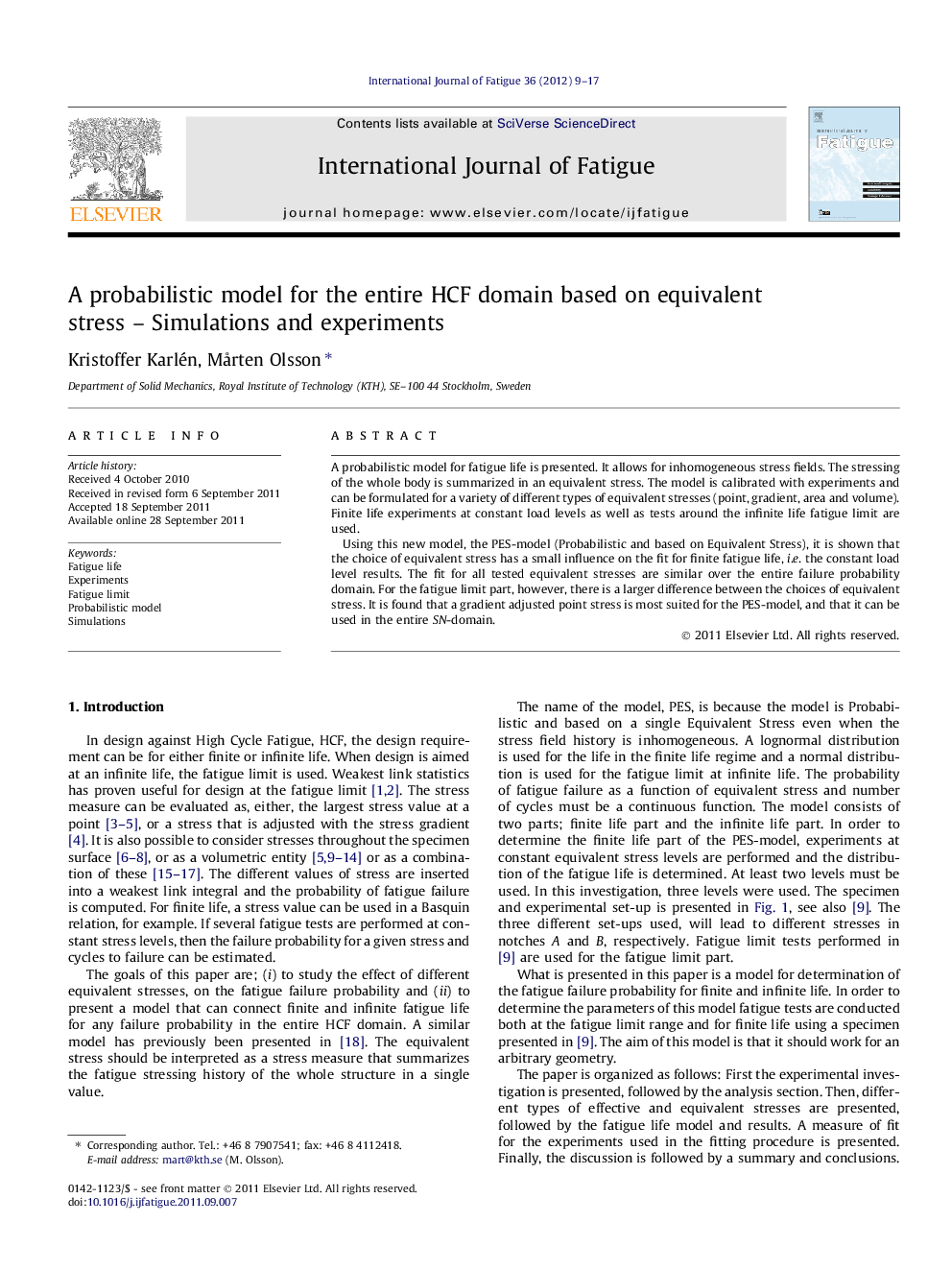| Article ID | Journal | Published Year | Pages | File Type |
|---|---|---|---|---|
| 781120 | International Journal of Fatigue | 2012 | 9 Pages |
A probabilistic model for fatigue life is presented. It allows for inhomogeneous stress fields. The stressing of the whole body is summarized in an equivalent stress. The model is calibrated with experiments and can be formulated for a variety of different types of equivalent stresses (point, gradient, area and volume). Finite life experiments at constant load levels as well as tests around the infinite life fatigue limit are used.Using this new model, the PES-model (Probabilistic and based on Equivalent Stress), it is shown that the choice of equivalent stress has a small influence on the fit for finite fatigue life, i.e. the constant load level results. The fit for all tested equivalent stresses are similar over the entire failure probability domain. For the fatigue limit part, however, there is a larger difference between the choices of equivalent stress. It is found that a gradient adjusted point stress is most suited for the PES-model, and that it can be used in the entire SN-domain.
► The gradient adjusted stress gives most accurate predictions. ► The point stress gives poor predictions. ► The area and volume equivalent stress show similar results. ► For finite life there is a small difference between the four equivalent stresses. ► At the fatigue limit, the difference between the effective stresses is larger.
